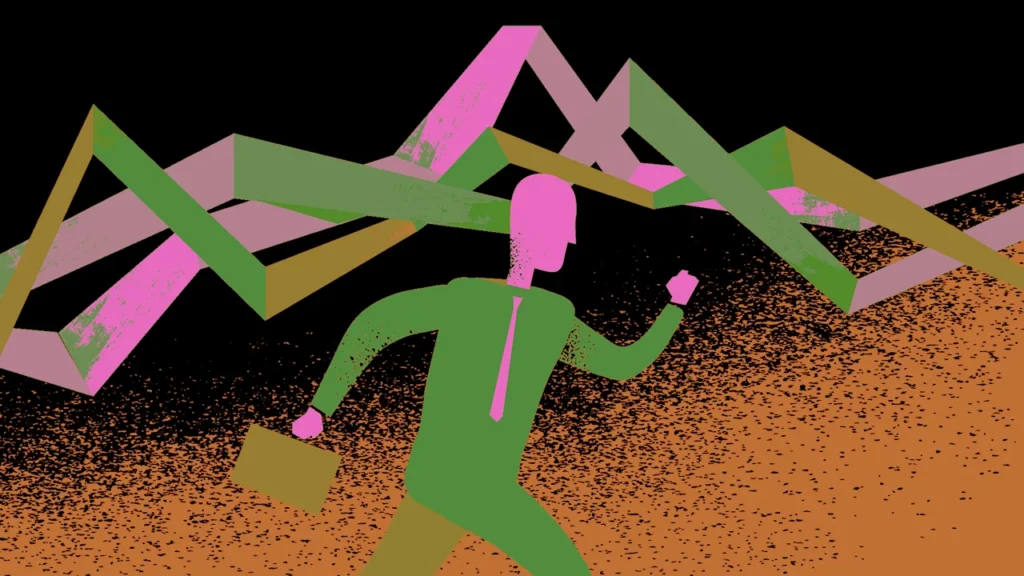
Underperformance usually shows up in the guise of missed deadlines, low-quality work, or a bad attitude. This gets spotted sometimes, but not always, by a leader who then has to make a choice: when and how to tackle the underperformance.
However, the problem can be exacerbated by acting too quickly: there is often a fierce desire within leaders to jump to action. They want to stop the badness, stop the ripples, and solve the situation as quickly as possible. But often, this means that they make assumptions about what is causing the underperformance and how to solve it without taking a little time to explore the real reasons behind the poor performance.
The problem can also be exacerbated by acting too slowly: underperformance has a nasty habit of rippling out. Whether it creates a sense among colleagues that this low standard is acceptable, or whether it means that team members get annoyed that this individual is “getting away with it” (and therefore reduce their own efforts to create a sense of “parity”), it all ends in the same place: more underperformance and a potential impact on the workplace culture.
I developed SOLVE, a leadership problem-solving model, to deal with exactly these sorts of problems: ones that need solving but aren’t as easy as jumping straight to action. Causes need establishing, options need considering, context needs to be taken into account. In the case of underperformance, the five stages of the SOLVE model would work like this:
S – State the Problem
Try to express, in 1–2 sentences, what the problem appears to be and the impact it’s having. Try to be precise about the behaviour causing concern: “They’re regularly late with deliverables and hesitant to give their opinion in meetings, which reduces their impact and makes our team look unprepared.”
O – Open the Box
Here, leaders dig into the problem more deeply, trying to work out why this situation is occurring. I encourage them to do a bit of research, and in this case, research should absolutely include talking to the team member in question to find out what’s going on.
In the case of underperformance, I would investigate the following areas:
- Has their workload increased recently, either because you’ve given them more tasks, or someone else has without your awareness?
- Are they being asked to do work at a higher level than before? You might not perceive this in the same way they do, so it’s worth asking them the question.
- Has anything changed in their personal life? In some country and company cultures, it’s not appropriate to ask this outright, but there is no harm in a catch-up asking them how things are going “in general” and seeing if they bring anything up.
- Are they still finding their work interesting? Has anything changed that may have put their values out of line with the company’s or vice versa?
- Has the level of clarity over what’s expected of them changed? If the company’s strategy has changed, you’re a new manager, or they are working across two projects, they may simply be confused as to what to prioritize and why.
L – Lay Out Your Solution
Based on what you’ve discovered, you can now create a workable response. It might be offering clearer priorities, adjusting scope, or helping them to see the value of their work again. Leaders should think hard about what fits the context and the individual. With these very messy leadership problems, there is no such thing as a universal solution—think about how your organization’s size, industry, and status affect which solutions would work. If it’s a team issue, what impact does your function, size, and sub-culture have? And with regard to the individual involved, how does their background, personality, and experience affect your approach?
V – Venture Forth
Here, leaders start to put their actions into practice while looking out for problems along the way, ready to pivot. It may be that, as the underperformer starts to roll out actions to improve their performance, more factors reveal themselves as being important to take into account. For example, a leader I worked with recently thought that the solution to team disengagement was to increase rewards. However, the very mention of rewards led one team member to start to gripe about how this company thinks you can pay off anyone. It emerged that, even though the team member hadn’t previously said it, their disengagement was as a result of feeling bored with the work, rather than feeling unrewarded. The leader focused instead on providing work that team member perceived as more interesting, and their engagement rapidly improved.
E – Elevate Your Learning
This is about using the new skills and knowledge you’ve gleaned to generate further positive impacts. For example, if you’ve learned more about how to help team members manage their workload, can you share this with other leaders who have overstretched teams?
I believe, and have seen through my work, that the SOLVE model can make a meaningful difference in handling underperformance (as well as plenty of other types of leadership problems).
Leaders I work with on staff underperformance benefit from the encouragement that they should slow down, lay the situation out clearly, and then pick a solution that properly fits their context. They also appreciate being shown, through the Elevate stage, how to make sure that the time they’ve taken solving this problem hasn’t gone to waste. They have developed skills and approaches that will continue to help them and others in the future.
The SOLVE framework allowed one leader I recently worked with to break down precisely why their sub-teams were underperforming, looking at the issue on an individual basis, and come up with targeted solutions. Importantly, they were also able to use their skills to help other leadership teams across the firm, multiplying the impact that their careful handling of underperformance had for their firm.
I recommend, if you are keen to deal with an underperformance issue, to work through the five stages and see the positive impact that they can have on your team and, therefore, your leadership.
